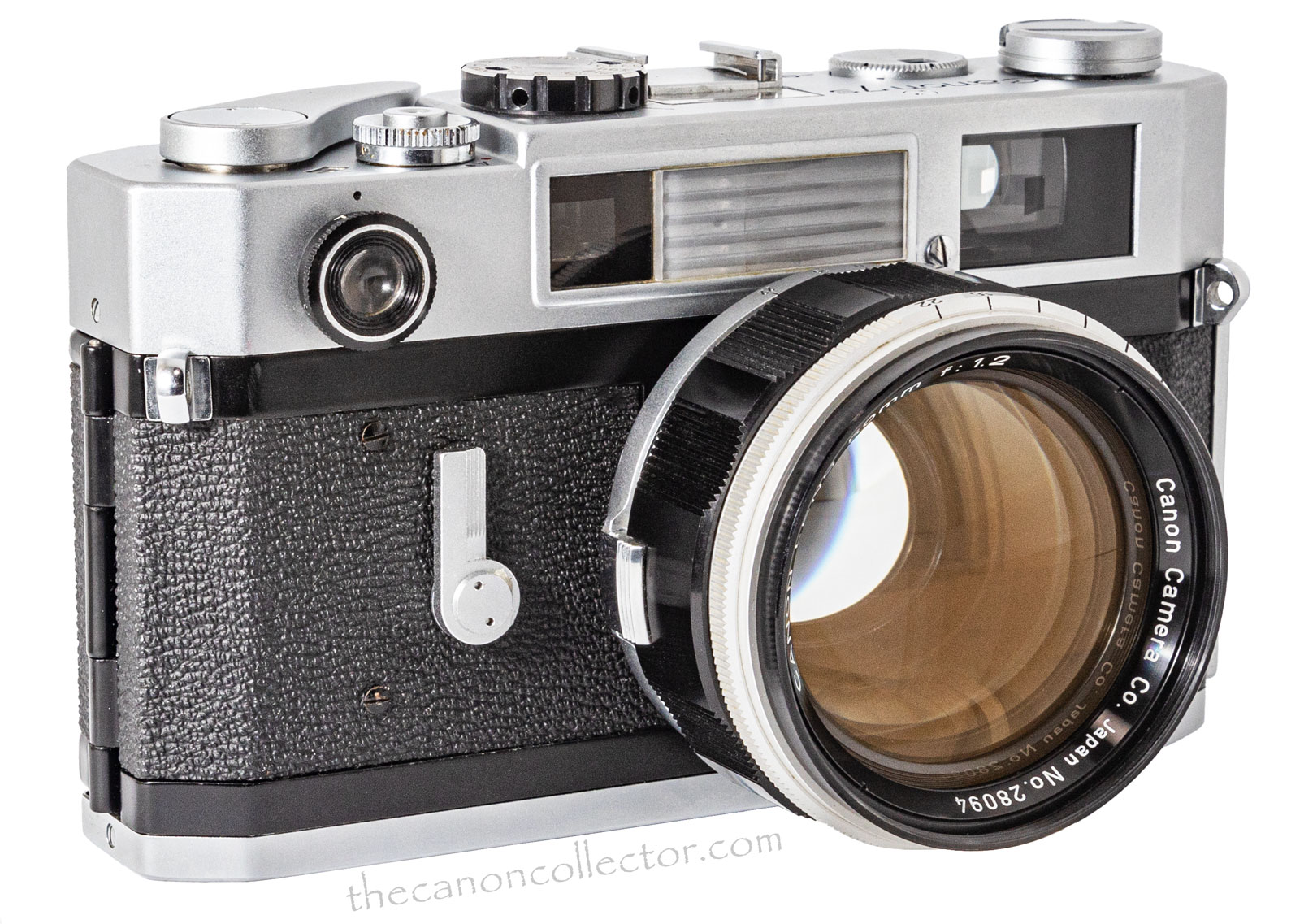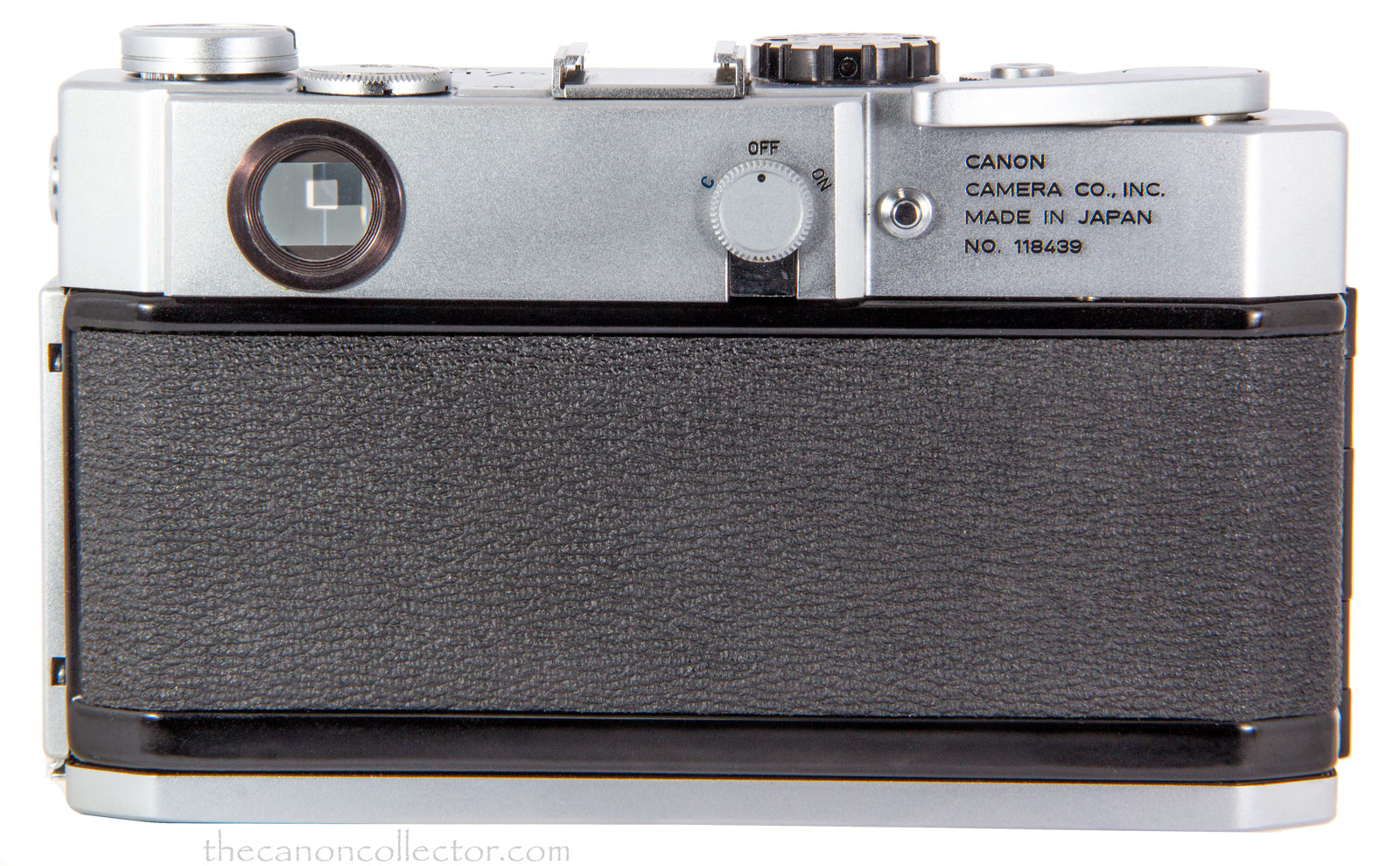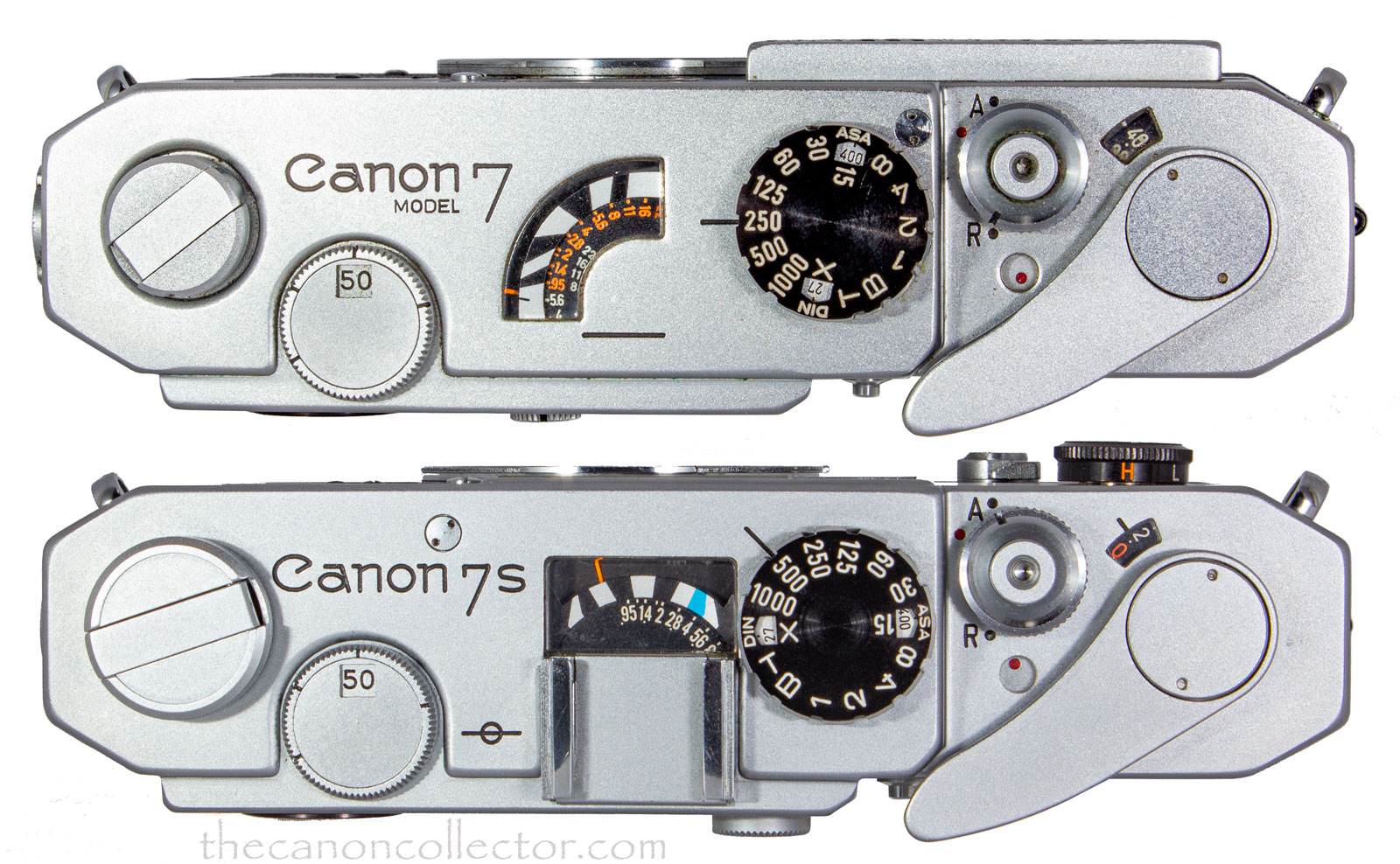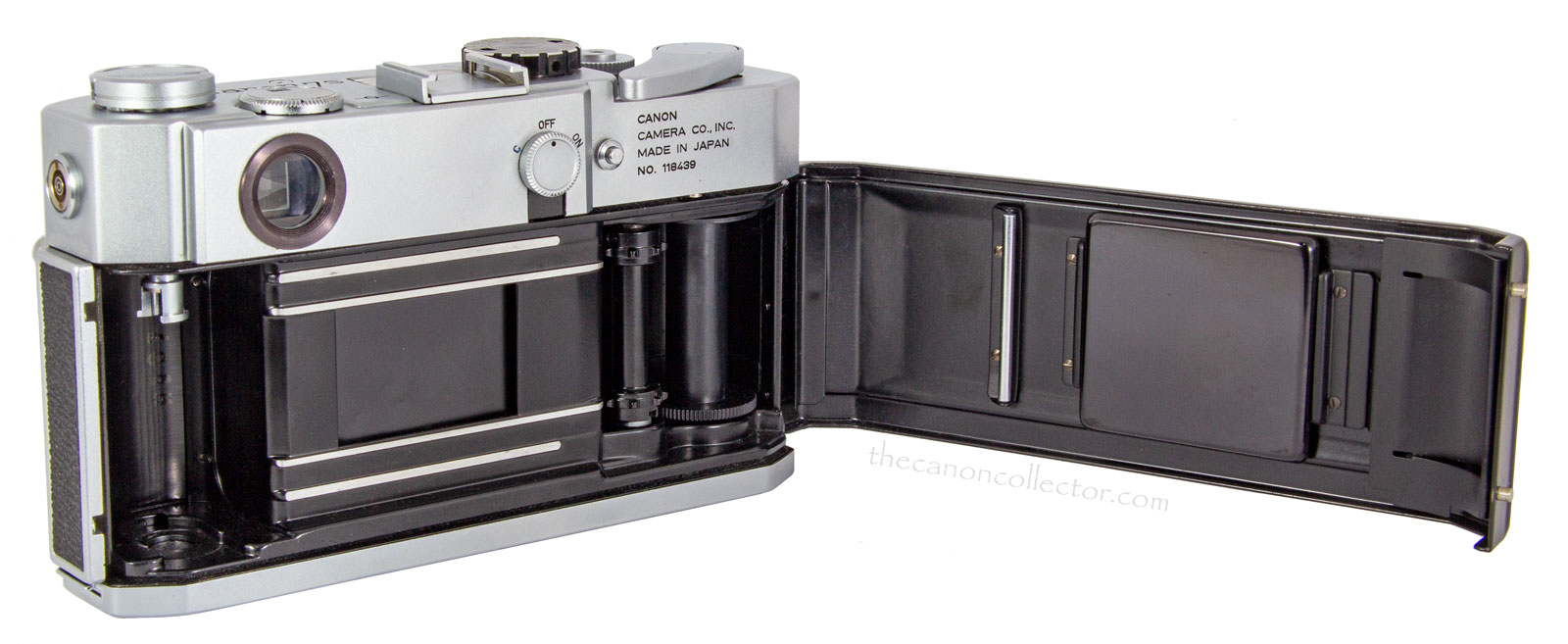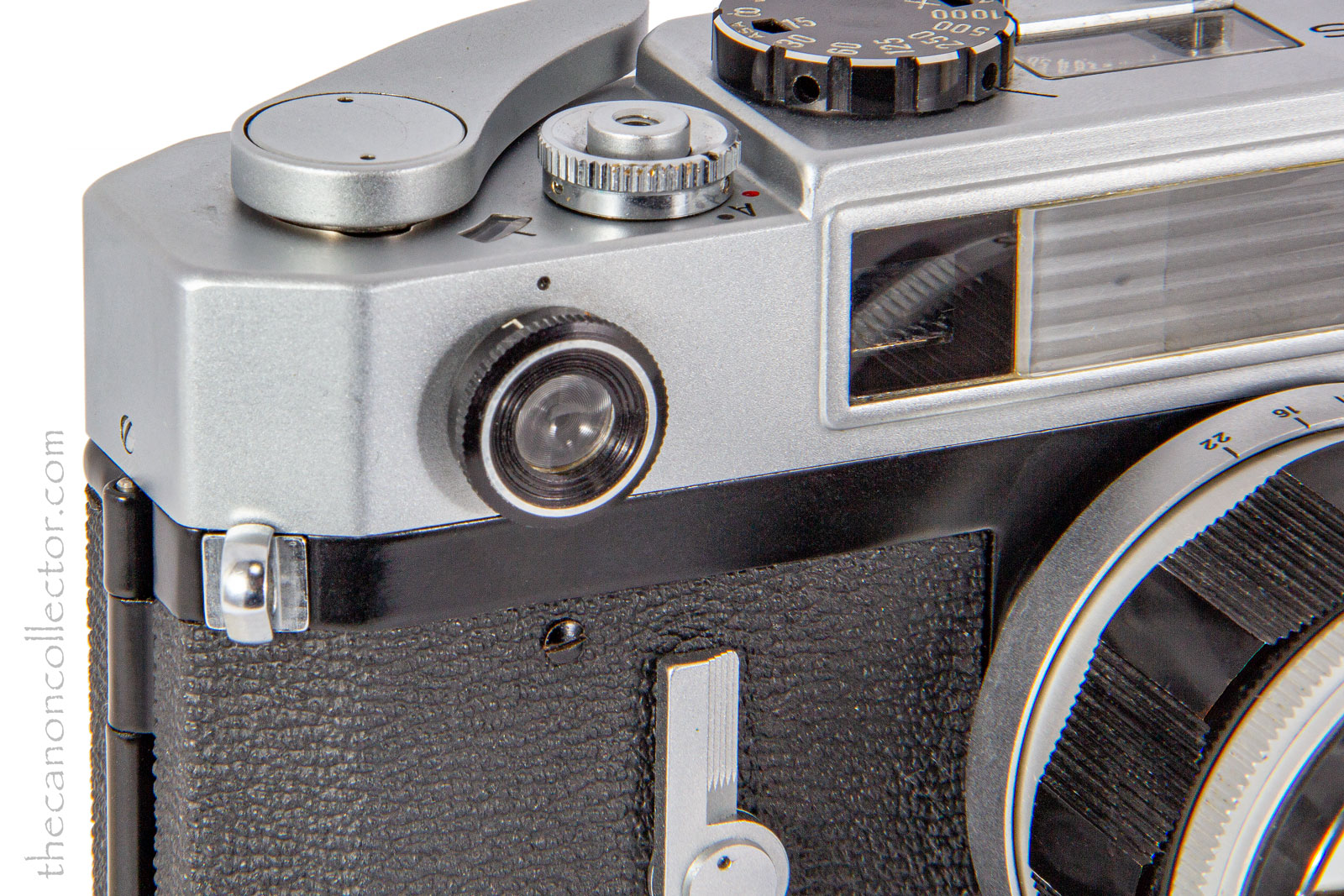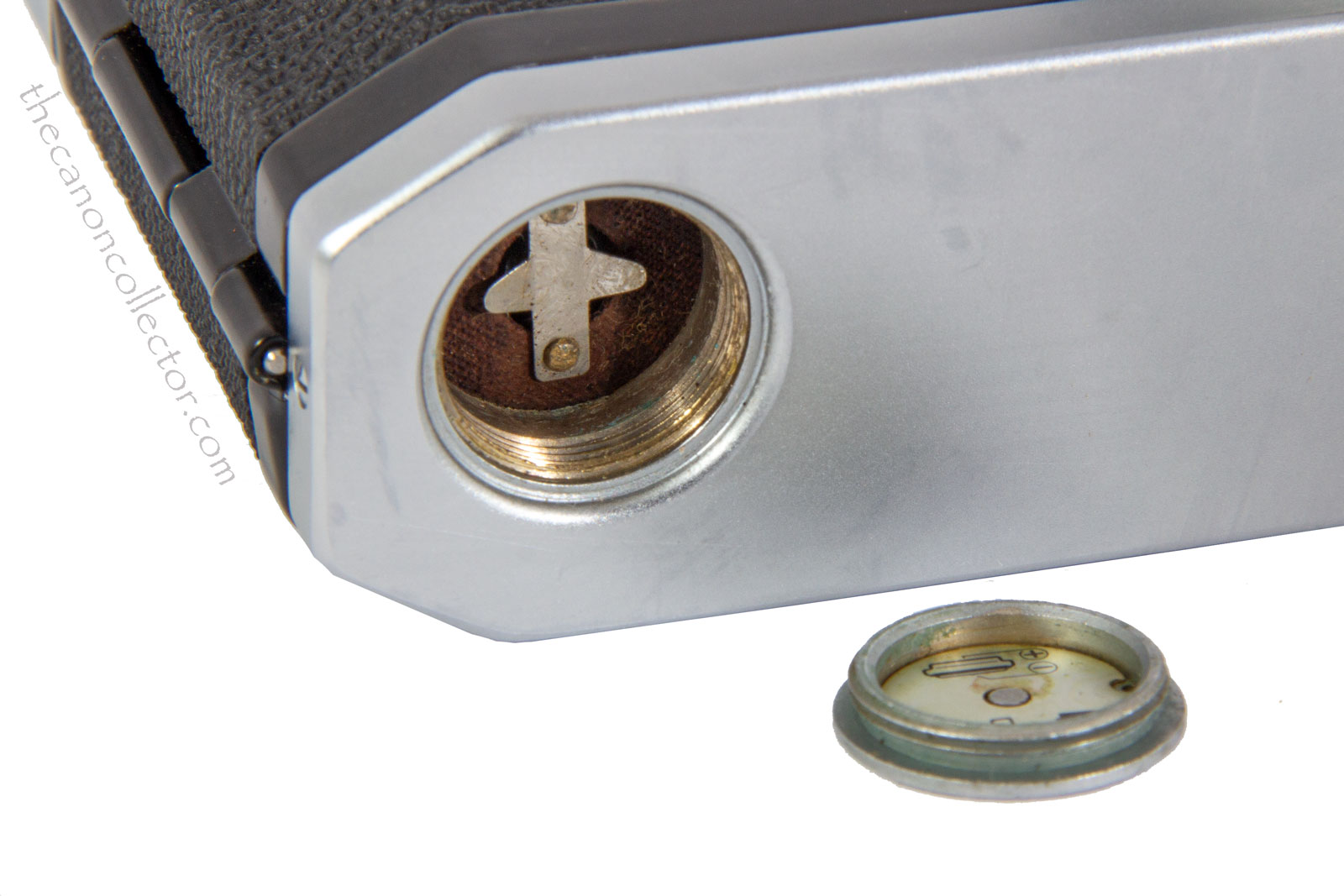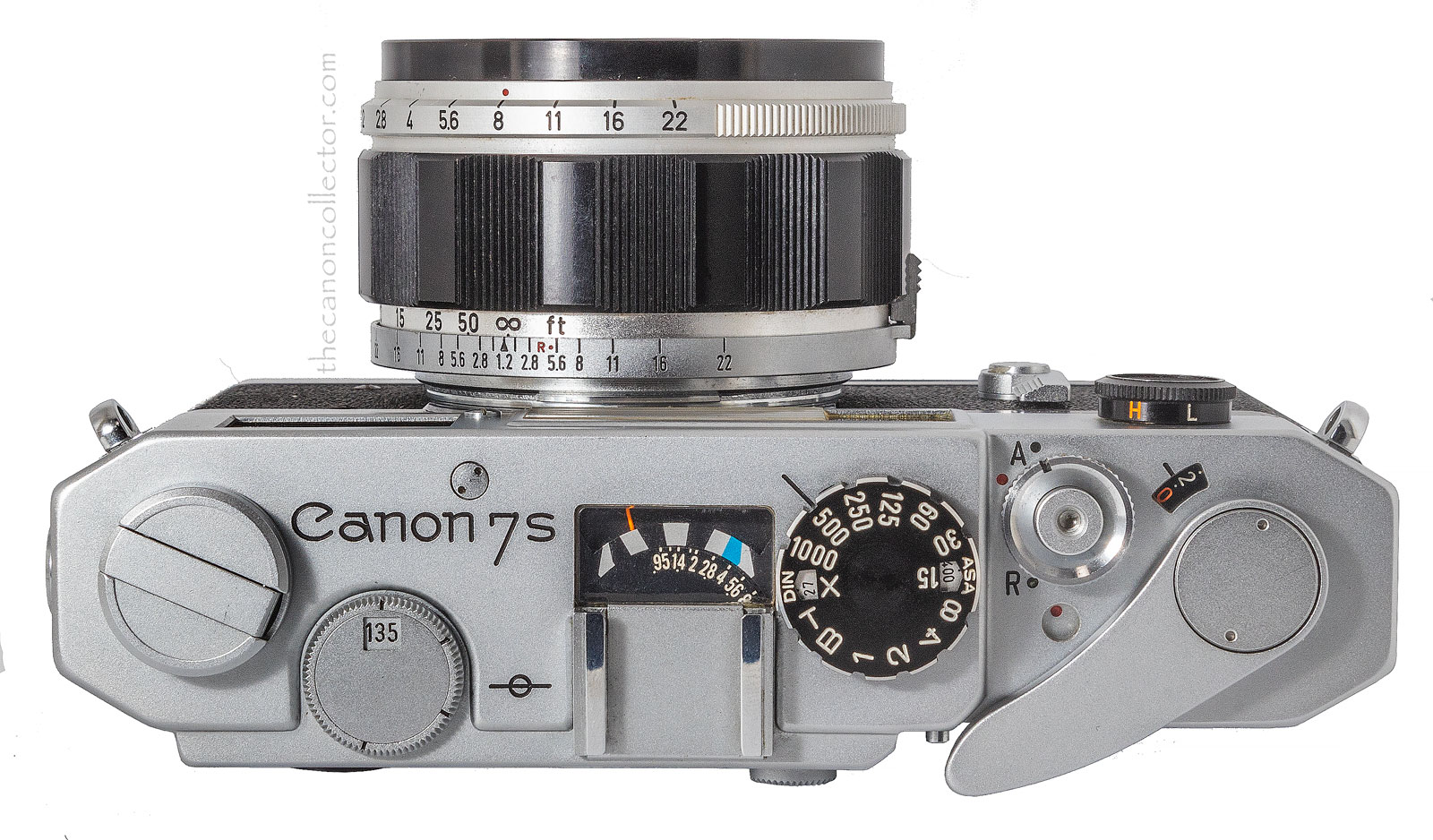This is my Model 7s Ser. No. 118439. Actually it is a Model 7sZ which is almost indistinguishable from the 7s.
Canon Model 7s
The Canon Model P was Canon’s most successful rangefinder camera up to that point. Introduced in 1958 over 81,000 were sold. To follow up on this success The Company spent more time and effort developing its successor than they had for any previous camera. And they produced an exceptional successor to the Model P.
In 1961 the Model P was replaced by the Model 7 which remained in production
until November of 1964 and went on to sell over 137,000 of them. This camera was state of the art for 1961 and was the equal of any rangefinder camera then available, both in quality of build and operation. It featured a built in selenium light meter and a viewfinder with 4 projected sets of frames offering outlines for five separate focal lengths, 35mm, 50mm, 85mm, 100mm and 135mm. Surprisingly, this modern feature rich camera did not have an accessory shoe.
The Model 7s has shed the large selenium sensor on the front of the camera and has the small round window on the left side for the CdS meter.
By the end of production of the Model 7 at the end of 1964 the camera industry was moving beyond the rangefinder camera. The very successful Nikon F had been introduced in April of 1959 as had the Canonflex. By 1964 Canon was producing the first of the F Series SLR’s. However, in spite of this, the Model 7 had been so well received that Canon felt an upgraded camera was commercially viable. And so in April of 1965 they introduced the Model 7s. This was to be Canon’s last, and arguably its best, rangefinder camera.
We have a Newsletter
There is a Newsletter for thecanoncollector.com to keep you up to date on what we are posting. Try it!
These are the Model 7 (top) and Model 7sZ (bottom) top decks. The similarities are obvious. On the Model 7s there is an accessory shoe and the meter has been repositioned to accomodate it. Also the rewind crank is larger. Other than that the top decks are basically identical.
Externally it is very similar to the Model 7. The improvements were essentially two. Firstly, the new camera had an accessory shoe and since it did the bayonet lugs on the PC socket were no longer required and were eliminated. The second improvement was the replacement of the selenium light meter with a CdS meter. This of course required a battery to operate it. This was a PX625 mercury cell which loaded into the bottom of the camera. The hi-low range switch was moved to the ring around the photocell on the front which could be rotated between high and low settings. On the back of the camera the Model 7 hi-low switch was replaced with an on-off-check switch.
All things considered, this camera was moderately successful with around 16,000 sold. In use however certain minor shortcoming were noticed. In particular the viewfinder was somewhat more convenient for nearsighted people and it was subject to ghost images when viewing a certain angles.
The bottom of the Model 7s has the battery compartment on the left side and on the right is the locking key. The key is not strictly necessary for locking the back but it also necessary as it opens and closes the Canon film cassette if that is being used.
As Canon often did, during production minor changes were made to improve performance or to make production less expensive. Generally these changes did not give rise to new names or model designations. However, in around 1967 it was decided to correct the viewfinder shortcomings and a major upgrade to the optics were undertaken. This upgrade did not receive a new model designation from Canon however collectors have since labeled this variation the Model 7sZ. About 4000 copies of this model were sold.
As Canon often did, during production minor changes were made to improve performance or to make production less expensive. Generally these changes did not give rise to new names or model designations. However, in around 1967 it was decided to correct the viewfinder shortcomings and a major upgrade to the optics were undertaken. This upgrade did not receive a new model designation from Canon however collectors have since labeled this variation the Model 7sZ. About 4000 copies of this model were sold.
The Model 7s
ooks like most any 35mm camera with
a swing back. The shutter is titanium to protect the curtain from the sun which can burn holes
in a cloth shutter if you are careless. The meter’s On-Off-Check switch is to the right of the eye piece. Beside it is a button used to change the film speed setting on the camera.
The CdS meter window is much neater than the larger Selenium cell in the Model 7. The Hi and Low settings are selected by rotating the ring around the window.
The battery compartment on the 7s is on the bottom on the opposite side to the locking key. This was the first Canon camera to require a battery. The camera uses a PX625 mercury battery which had its problems.
My 7s is actually a 7sZ. You can tell this by the Rangefinder Adjustment Port just above the “n” in “Canon” on the top deck. On the Model 7 and 7s it is above and to the right of the shutter dial, about where the 1/60th speed is located.
The Model 7s and 7sZ are almost indistinguishable. Without removing the rangefinder cover the only way to tell the difference is the placement of the Rangefinder Adjustment Port Cover. On the Model 7 and 7s this is found on the corner of the raised portion of the top deck above and to the right of the shutter dial. However on the 7sZ it is found above the “n” in the name Canon on the top deck.
The 7s and 7sZ are beautiful cameras to hold. They are large and heavy and have a quality feel to them. Controls are positive and the single stage trigger release is somewhat soft but predictable. Apparently this camera was never available from the factory in black. That is unfortunate because it would have been handsome indeed.
This website is the work of R. Flynn Marr who is solely responsible for its contents which are subject to his claim of copyright. User Manuals, Brochures and Advertising Materials of Canon and other manufacturers available on this site are subject to the copyright claims and are the property of Canon and other manufacturers and they are offered here for personal use only.

